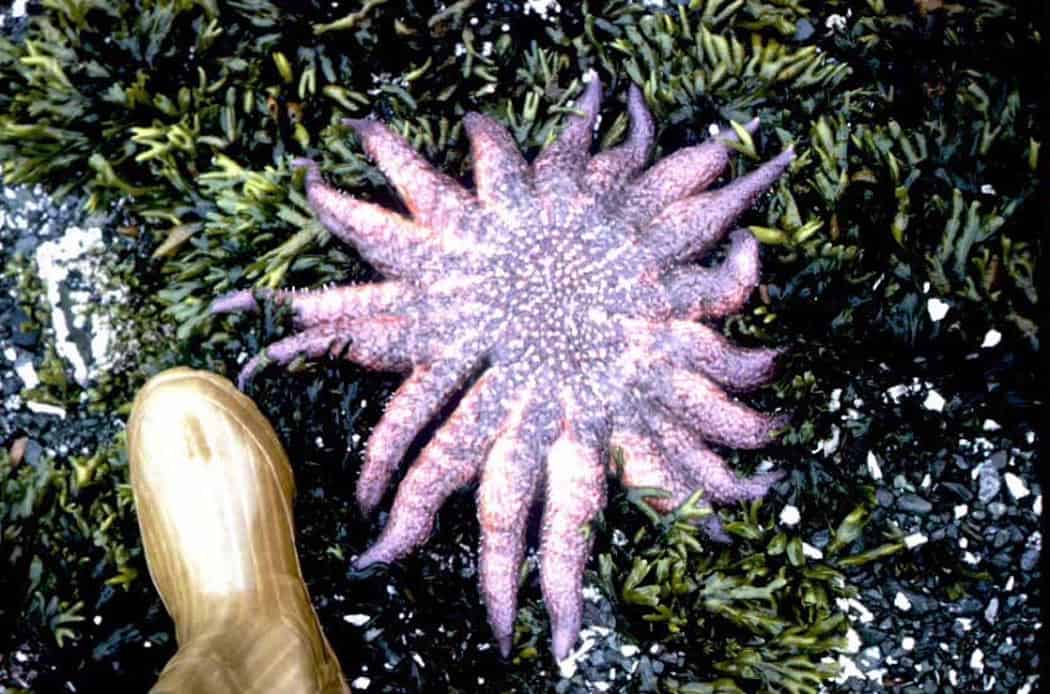The outbreaks are so lethal, according to a biologist involved in both studies, that at least one species of sea star has vanished off the coasts of Washington state and British Columbia and the lobster fishery, already decimated in southern New England, will probably be threatened in Maine.
In the Pacific, a wasting disease is blamed for the disappearance of the technicolor sunflower sea star. It’s also affecting the ochre sea star, which scientists at Cornell University, the University of Puget Sound and Northeastern University, as well as other institutions, examined for the latest research. Their reports were published this week.
The sea star study was led by Morgan E. Eisenlord, an evolutionary biologist at Cornell, and published in the Proceedings of the Royal Society B.
In a laboratory and at 16 sites on the San Juan Islands off Washington state’s coast, researchers determined that ochre sea stars gradually became sicker as water temperatures rose slightly.
Conditions simulated in the lab confirmed what the scientists observed in the field. As temperatures rose, the disease became more prevalent and adult ochres died within days. The disease, plus death, was more prominent in temperatures between 54 and 66 degrees Fahrenheit (12 and 19 degrees Celsius). For the adults, the risk of death was 18 percent higher at 66 F.
“The little ones seem to be more resistant,” said Drew Harvell, a Cornell professor of ecology and evolutionary biology who studies marine diseases and was involved with both reports. “It takes them longer to get sick, but once they do, they succumb quickly.”
The researchers speculate that all sea stars have carried the virus for a long time. Warming water appears to increase its potency.
Large numbers of ochre sea stars washed ashore in California in 2011, but no one knew why. When the disease outbreak was first detected in 2013, scientists thought it might be contained to the waters off Washington and southwestern Canada. Yet over the more than two years since, it has been identified as the source of mortality in 20 species from California to as far north as Alaska.
“This outbreak came so quickly, by the time we knew enough about it, a lot of it had already happened,” Harvell said. “The question for this year in our minds is what will happen in Alaska. The sunflower star that used to be very abundant in this area is gone. It used to be that you could see 30 in one dive. In the San Juan Islands, we had 105 divers and didn’t find any.”
The lobster study also traced the increase in shell disease to warmer waters.
The syndrome — first observed in the late 1990s in Long Island Sound off New York and Connecticut, Block Island Sound off Rhode Island and Buzzards Bay off Massachusetts — is marked by the rapid deterioration of lobsters’ shells. It spread rapidly, particularly in females, which molt less often than males and carry their shells longer, exposing them more to the disease.
One laboratory experiment that examined the effect of the bacteria detected them at 50 F (10 C). At that temperature, the disease moved slowly. But between 50 and 68 F (10 and 20 C), it progressed faster. Even after an old shell was shed through molting, the new shell was quickly infected. Lobsters showing signs of shell disease are not marketable.
“Shell disease has devastated the southern New England lobster fishery, and now with warming, it’s led to a situation where the Maine lobster industry may be at risk,” said Jeff Shields, a professor of marine science at the Virginia Institute of Marine Science and a co-author of the study.
The study was led by Jeffrey Maynard, then a post-doctoral associate in Harvell’s lab at Cornell. It also was published in the Royal Society B as part of the journal’s marine-disease special.
Shields said scientists will be on the alert for increases in shell disease levels off Maine this spring and will warn natural-resources managers if they are detected. To offset the stress on lobsters, the researchers could recommend targeting pollution, boat traffic and modes of transmission in the affected areas.
Numerous climate studies have shown that the world’s oceans are heating up. In addition, 30 percent of the carbon released into the atmosphere ends up there, leading to acidification that is further destroying coral, shell life and other organisms.
© 2016, The Washington Post

